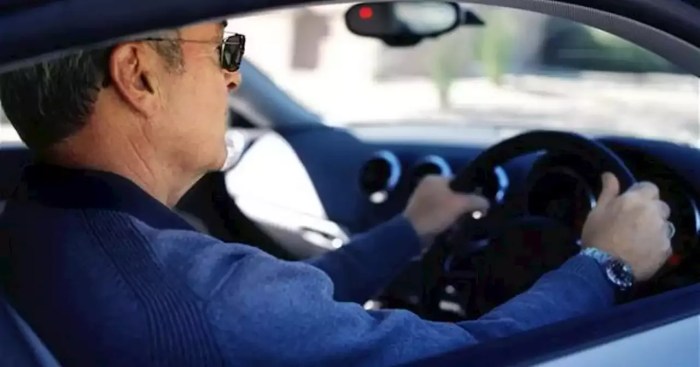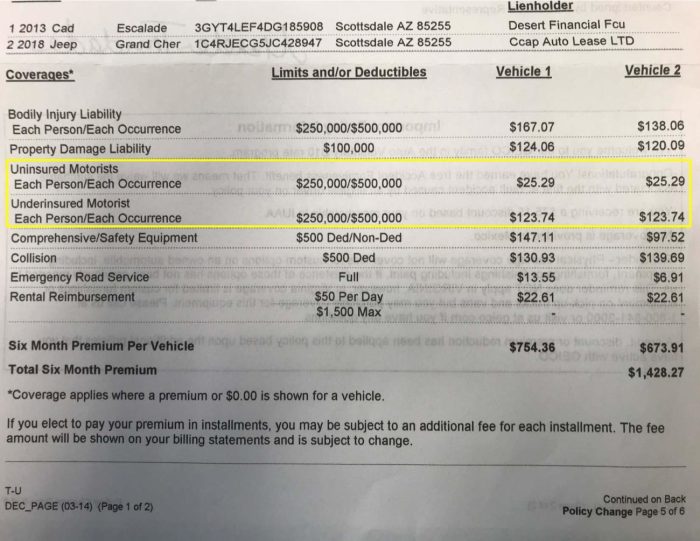Un automovilista debe saber que ser un conductor responsable implica comprender las obligaciones legales, las prácticas de conducción segura, el mantenimiento del vehículo, la preparación para emergencias y la conciencia del impacto ambiental. Este artículo proporciona una guía integral para los conductores, cubriendo todos los aspectos esenciales para garantizar una conducción segura, eficiente y responsable.
Vehicle Ownership Responsibilities

Vehicle ownership comes with a set of legal obligations and responsibilities. These include ensuring the vehicle is registered, insured, and maintained in a safe and roadworthy condition.
Failing to meet these obligations can have serious consequences, including fines, loss of driving privileges, and even criminal charges. It is therefore essential for all vehicle owners to be aware of their responsibilities and to take steps to comply with them.
Registration
Vehicle registration is a legal requirement in most jurisdictions. It involves providing information about the vehicle, such as its make, model, year of manufacture, and VIN number, to the relevant government agency. Registration fees vary depending on the jurisdiction, but they typically cover the cost of issuing a license plate and registration card.
Failure to register a vehicle can result in fines or other penalties. In some cases, the vehicle may be impounded or even seized.
Insurance
Vehicle insurance is also a legal requirement in most jurisdictions. It provides financial protection in the event of an accident, covering damages to the vehicle, injuries to the driver and passengers, and property damage caused to others.
There are different types of vehicle insurance available, and the type of coverage required will vary depending on the jurisdiction. It is important to choose a policy that provides adequate protection for the vehicle and its occupants.
Failure to maintain insurance can result in fines or other penalties. In some cases, the vehicle may be impounded or even seized.
Maintenance, Un automovilista debe saber que
Regular vehicle maintenance is essential for ensuring the vehicle is safe and roadworthy. This includes tasks such as changing the oil, rotating the tires, and checking the brakes. The frequency of maintenance will vary depending on the type of vehicle and how it is used.
Failure to maintain a vehicle can result in a number of problems, including decreased fuel efficiency, increased emissions, and safety hazards. In some cases, it can even lead to accidents.
Regular vehicle inspections can help to identify potential problems early on, before they become more serious. It is recommended to have the vehicle inspected by a qualified mechanic at least once a year.
Safe Driving Practices

Safe driving practices are crucial for ensuring the safety of drivers, passengers, and pedestrians alike. By adhering to the rules of the road, practicing defensive driving techniques, and avoiding distractions, drivers can significantly reduce their risk of being involved in an accident.
Basic Rules of the Road
The basic rules of the road provide a framework for safe and orderly driving. These rules include:
- Speed limits: Speed limits are established to ensure safe driving speeds for the given road conditions and traffic volume.
- Traffic signals: Traffic signals control the flow of traffic and indicate when it is safe to proceed or stop.
- Right-of-way: Right-of-way rules determine which vehicles have the right to proceed first at intersections and other situations.
Dangers of Distracted Driving
Distracted driving is a major cause of accidents. Distractions can include:
- Texting: Texting while driving is extremely dangerous and can significantly increase the risk of an accident.
- Talking on the phone: Talking on the phone while driving can be distracting and impair a driver’s ability to focus on the road.
- Eating: Eating while driving can be distracting and take a driver’s attention away from the road.
Importance of Defensive Driving Techniques
Defensive driving techniques are strategies that drivers can use to anticipate and avoid potential hazards on the road. These techniques include:
- Scanning the road ahead: Drivers should constantly scan the road ahead for potential hazards, such as other vehicles, pedestrians, or road conditions.
- Maintaining a safe following distance: Drivers should maintain a safe following distance behind the vehicle in front of them to provide enough time to react to sudden stops or changes in traffic conditions.
- Anticipating the actions of other drivers: Drivers should anticipate the actions of other drivers and be prepared to react accordingly.
Vehicle Maintenance

Maintaining a vehicle in good condition is crucial for ensuring its optimal performance, safety, and longevity. Regular maintenance tasks should be performed according to the manufacturer’s recommendations and include routine checks, fluid changes, and inspections.
Routine Maintenance Tasks
Every driver should perform the following routine maintenance tasks:
- Check fluid levels (oil, coolant, brake fluid, power steering fluid)
- Inspect tires for wear, damage, and proper inflation
- Replace air filter
- Clean or replace spark plugs
- Inspect and replace brake pads and rotors as needed
- Check and replace battery as needed
Importance of Regular Oil Changes
Regular oil changes are essential for engine health and performance. Motor oil lubricates moving parts, prevents wear and tear, and helps cool the engine. Dirty or old oil can lead to increased friction, overheating, and premature engine failure.
Importance of Tire Rotations
Tire rotations ensure even wear on all four tires, extending their lifespan and improving vehicle handling. Uneven tire wear can lead to reduced traction, increased fuel consumption, and premature tire replacement.
Importance of Brake Inspections
Regular brake inspections are crucial for maintaining safe stopping power. Worn brake pads or rotors can reduce braking effectiveness, leading to longer stopping distances and increased risk of accidents.
Signs and Symptoms of Common Vehicle Problems
Recognizing the signs and symptoms of common vehicle problems can help drivers identify and address issues early on. Some common problems include:
- Engine knocking or rattling: could indicate a problem with the engine valves, timing belt, or bearings
- Difficulty starting the engine: could indicate a problem with the battery, starter, or ignition system
- Excessive exhaust smoke: could indicate a problem with the engine, fuel system, or exhaust system
- Braking vibrations or noises: could indicate a problem with the brake pads, rotors, or calipers
- Unusual noises from the suspension: could indicate a problem with the shocks, struts, or control arms
Emergency Preparedness

Vehicle breakdowns and accidents can occur unexpectedly, and being prepared can help you manage these situations effectively. Maintaining an emergency kit in your vehicle is crucial for ensuring your safety and the safety of your passengers.
Essential Items in an Emergency Kit
- First-aid kit:Essential for treating minor injuries and providing basic medical care.
- Flares:Used to signal for help in case of a breakdown or accident.
- Flashlight:Provides illumination in dark conditions, especially during breakdowns or repairs.
- Water:Stay hydrated in case of prolonged delays or lack of access to water.
- Non-perishable food:Provides sustenance in case of extended delays or emergencies.
- Blanket:Offers warmth and comfort in cold or inclement weather.
- Multi-tool:A versatile tool that can be used for repairs, cutting, and other tasks.
- Jumper cables:Assists in starting a vehicle with a dead battery.
- Roadside assistance information:Contact information for roadside assistance providers.
Steps to Take in Case of an Emergency
In the event of a breakdown or accident, follow these steps:
- Stay calm and assess the situation:Remain composed and gather information about the situation.
- Pull over to a safe location:Move your vehicle to a safe area, if possible.
- Turn on hazard lights:Activate your hazard lights to alert other drivers.
- Call for help:Contact roadside assistance or emergency services, depending on the severity of the situation.
- Stay in your vehicle:Unless there is an immediate danger, remain inside your vehicle for safety.
- Use flares or reflectors:Deploy flares or place reflectors around your vehicle to increase visibility.
- Provide first aid:Administer first aid to any injured passengers.
Fuel Efficiency and Environmental Impact

Fuel efficiency measures the distance a vehicle can travel per unit of fuel consumed. It is influenced by various factors, including driving habits, vehicle size, and fuel type. Understanding these factors and adopting fuel-efficient practices can significantly reduce fuel consumption and minimize environmental impact.
Driving Habits
- Aggressive driving:Rapid acceleration, hard braking, and speeding reduce fuel efficiency.
- Idling:Leaving the engine running while stationary wastes fuel.
- Smooth driving:Anticipating traffic conditions and driving smoothly can improve fuel economy.
Vehicle Size and Fuel Type
- Vehicle weight:Heavier vehicles require more fuel to move.
- Aerodynamics:Vehicles with streamlined designs reduce wind resistance and improve fuel efficiency.
- Fuel type:Alternative fuels like hybrid or electric vehicles offer higher fuel efficiency compared to gasoline-powered vehicles.
Environmental Impact of Driving
Driving contributes to air pollution through the emission of greenhouse gases like carbon dioxide (CO2). These gases trap heat in the atmosphere, leading to climate change. Reducing fuel consumption and transitioning to more sustainable transportation practices can mitigate the environmental impact of driving.
Essential Questionnaire: Un Automovilista Debe Saber Que
¿Cuáles son las consecuencias de no cumplir con las obligaciones de propiedad de un vehículo?
El incumplimiento de las obligaciones de propiedad del vehículo, como el registro, el seguro y el mantenimiento, puede dar lugar a multas, penalizaciones y, en casos graves, a la incautación del vehículo.
¿Cuáles son las técnicas de conducción defensiva?
Las técnicas de conducción defensiva incluyen anticipar los peligros, mantener una distancia de seguimiento segura, evitar las distracciones y estar preparado para reaccionar ante situaciones imprevistas.
¿Qué elementos esenciales debo tener en mi vehículo en caso de emergencia?
Un kit de primeros auxilios, bengalas, una linterna, agua y alimentos no perecederos son elementos esenciales que deben guardarse en el vehículo para emergencias.